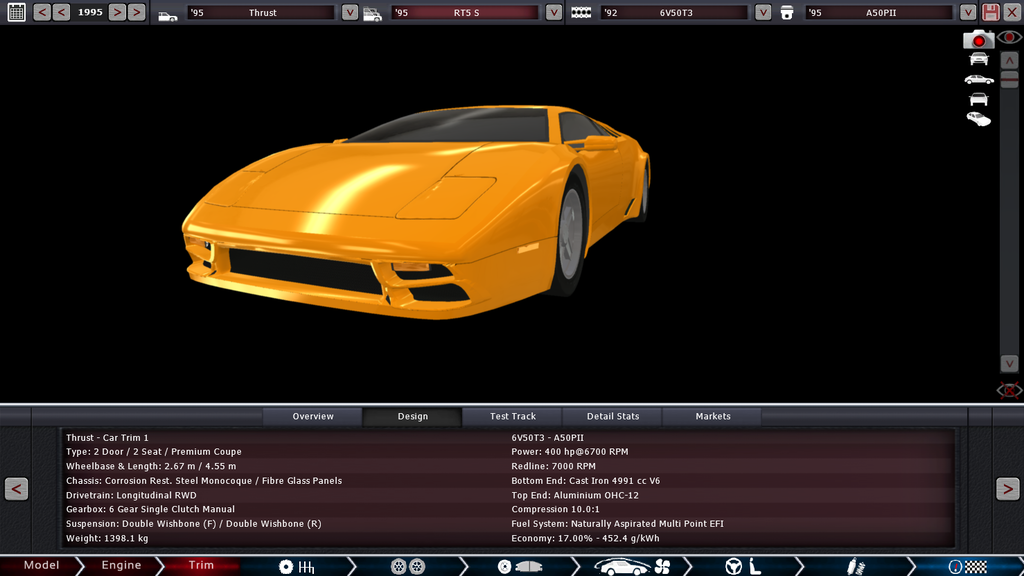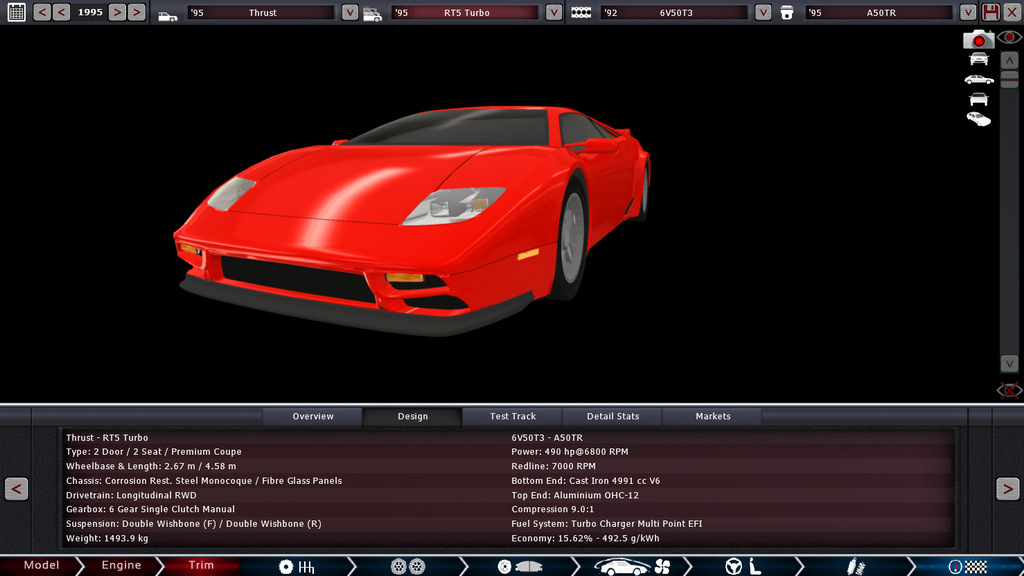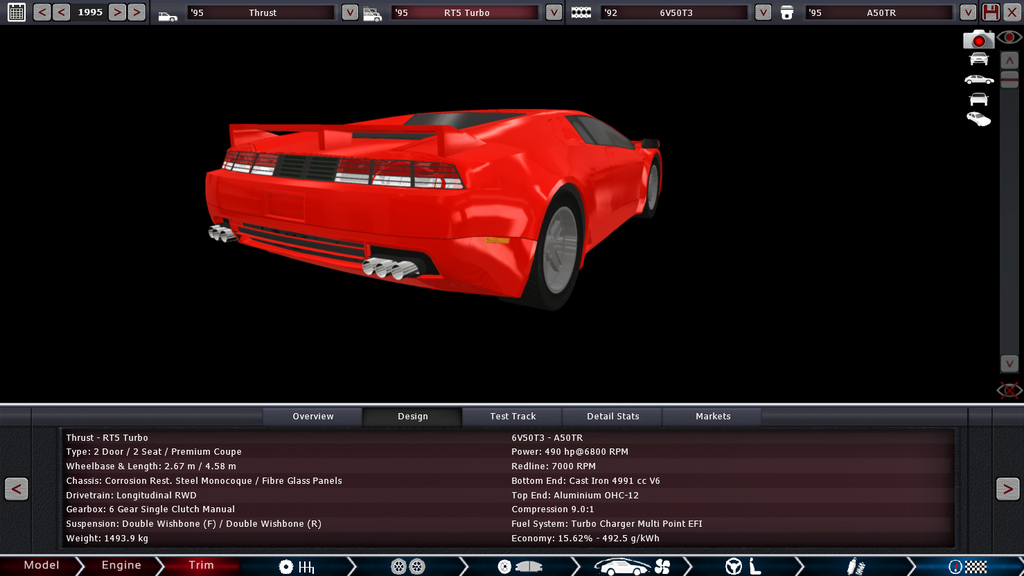In order to generate Thrust, first you need a jet. A Ramjet in this case. Enter the 5th generation.
Development of the 5th generation LV Ramjet began in 1990. The oldschool body-on-frame chassis was carried over from the 4th gen, which some may consider "conservative", but in all honesty the car was LVs answer to the Panther and B-Body platforms so it didn't matter. One thing that was changed however was the rear suspension, now fully independent with semi trailings arms, which did give the Ramjet a minor advantage in terms of handling. The other area LV engineers were very concerned about was aerodynamics. The previous Generation was quite boxy and unaerodynamic, which didn't really fit the aeronautical name of the car. The car got a completely new fastback bodystyle with a drag coefficient of just 0.27, one of the lowest of any production car at the time. The only engine available was the 6V50T3, albeit in many different variants.

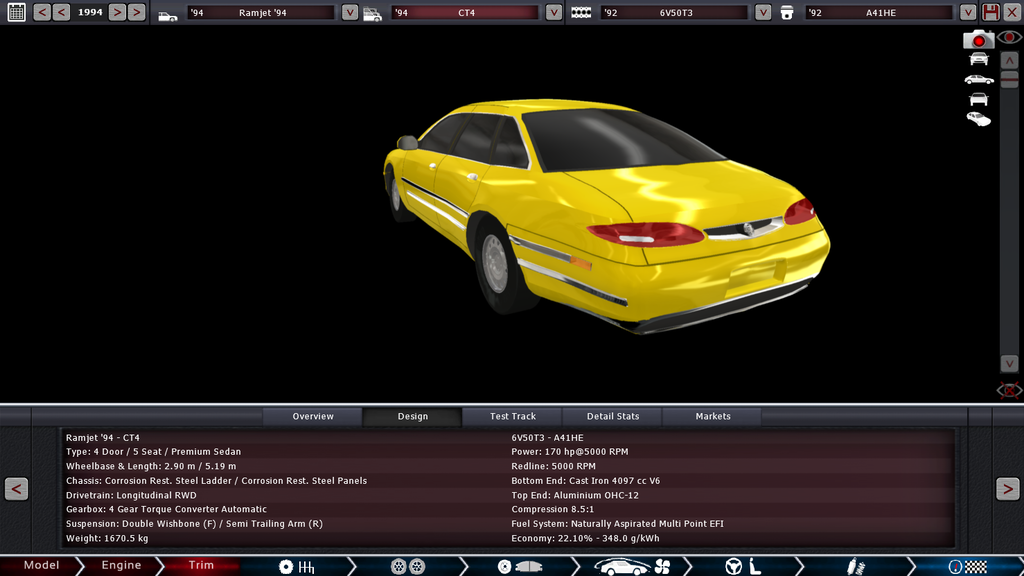
The base trim for the Ramjet was the CT4, aka the fleet special designed specifically for rental car agencies and taxi drivers. The main goal of this trim were low running costs, both in maintenance and fuel. The engine was a highly detuned 4.1L version of the 6V50T3, making just 170hp and 240lb-ft, but returning 29mpg paired to a 4-speed automatic transmission. The wheels were of the cheapest steel variety imaginable, and the rear featured drum brakes instead of discs. It was cheap and it did what it was supposed to do, and most of them ended up in junkyards after they had fulfilled their 500.000 mile service life. Even then most of them ran without issues thanks to pragmatic but tough as nails construction with gear driven OHC and six bolt main bearings that didn't mind running without any engine oil for a week... or five.
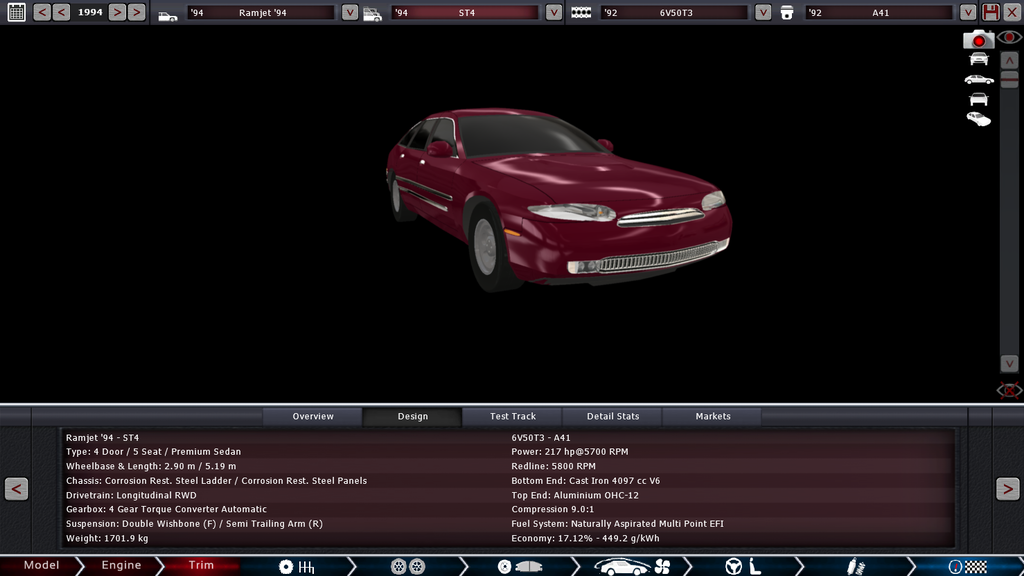
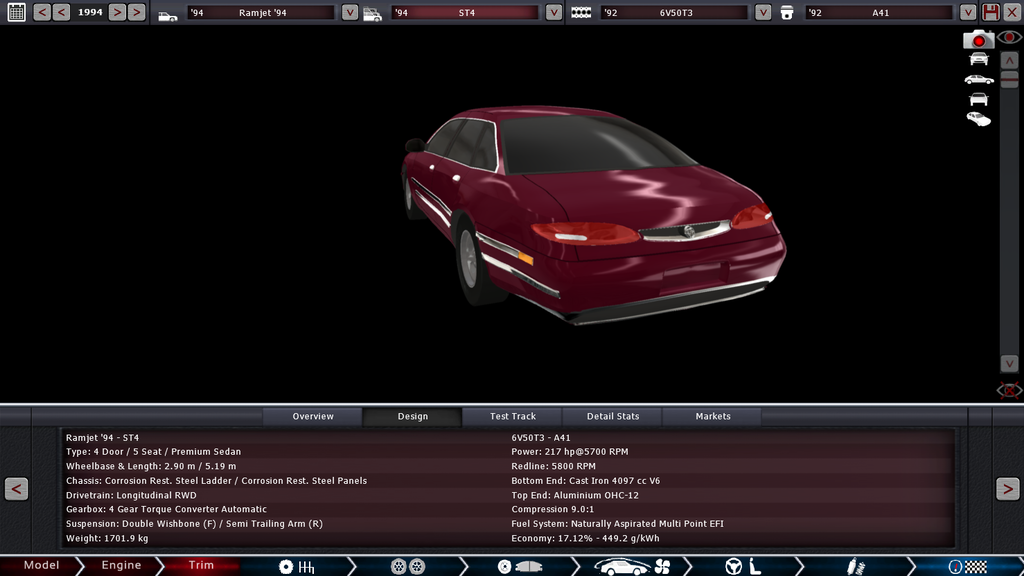
The next trim in the hierarchy was the ST4. It had the same engine and transmission as the CT4, but here it developed 217hp and 255lb-ft. The only other difference were the 4-wheel disc brakes.
This particular model was popular with elderly drivers, probably because it was comfortable. Today, one of these in good condition with low mileage with cost you nothing at all because one does not simply buy a Ramjet ST4, you inherit it from your grandparents, making it the perfect high-school ride for a 16-year old.
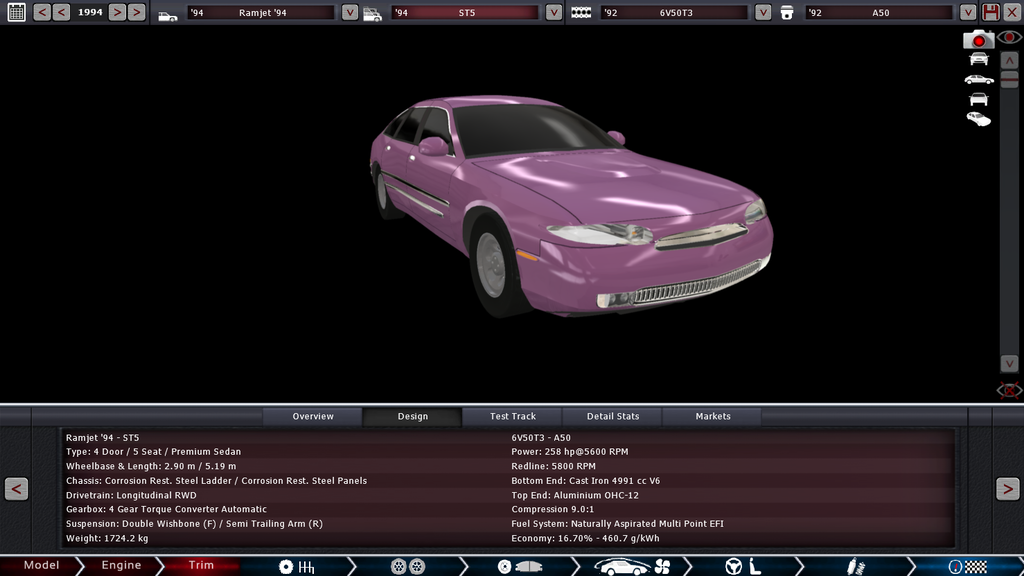
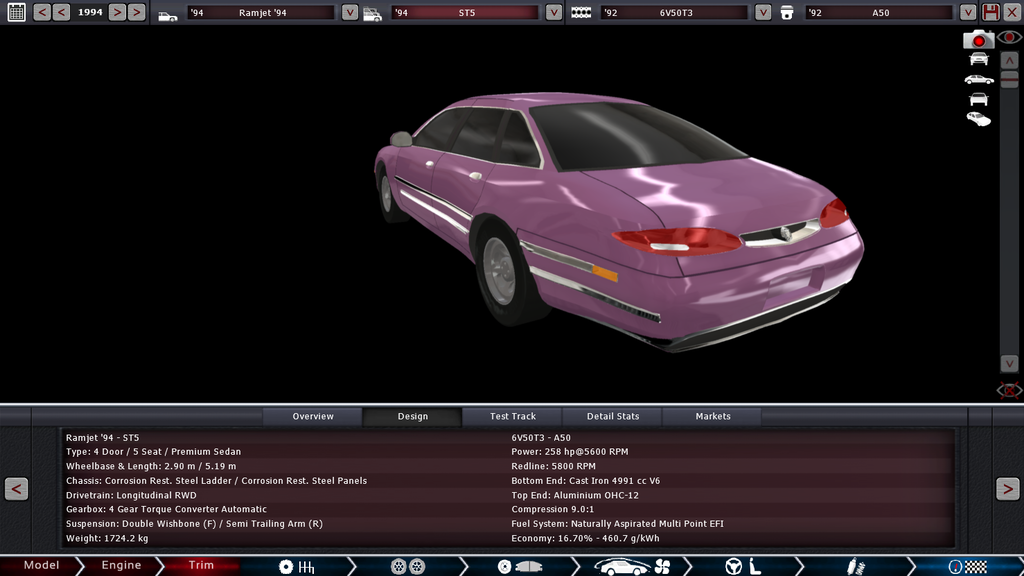
Ramjet ST5: for the seasoned man who's made it. Full fat 5.0L V6, 258hp. These are actually pretty popular with budget street racers, as they are dirt cheap to buy, easy to modify and can hit 160mph in stock form thanks to their great aerodynamics.
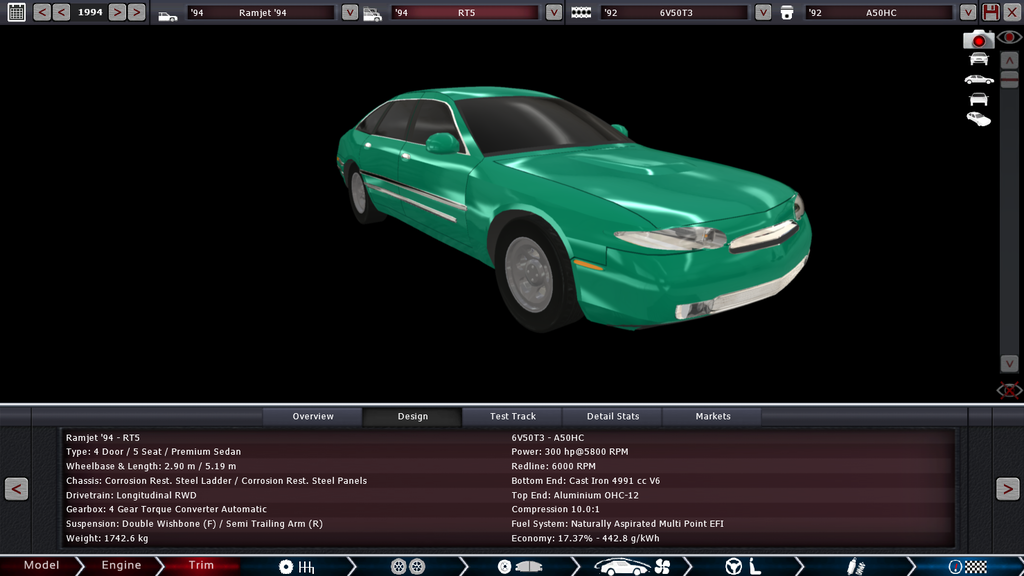
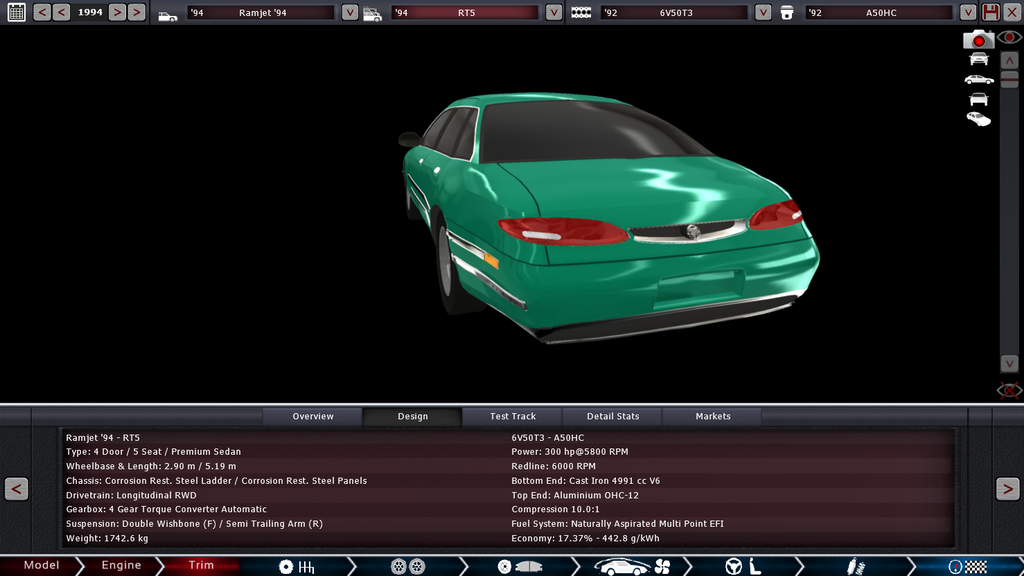
Now we're talking. This is the Ramjet RT5. It too has the 5.0L V6, a hybrid with the forged internals of the RT5 S, but the low-lift camshaft and small diameter valves of the ST5. It has 300hp, the heavy duty package (limited slip differential, stiffened chassis rails) as standard and it'll do 170 mph. This particular model is popular with drag racers because of its aerodynamics. In fact, the fastest 1/4 mile time of any stock block Ramjet was set by Bob Robson's heavily modified 1996 Ramjet RT5 with a 1400hp twin turbo 5.0 which did a 7.93s pass @ 171mph.
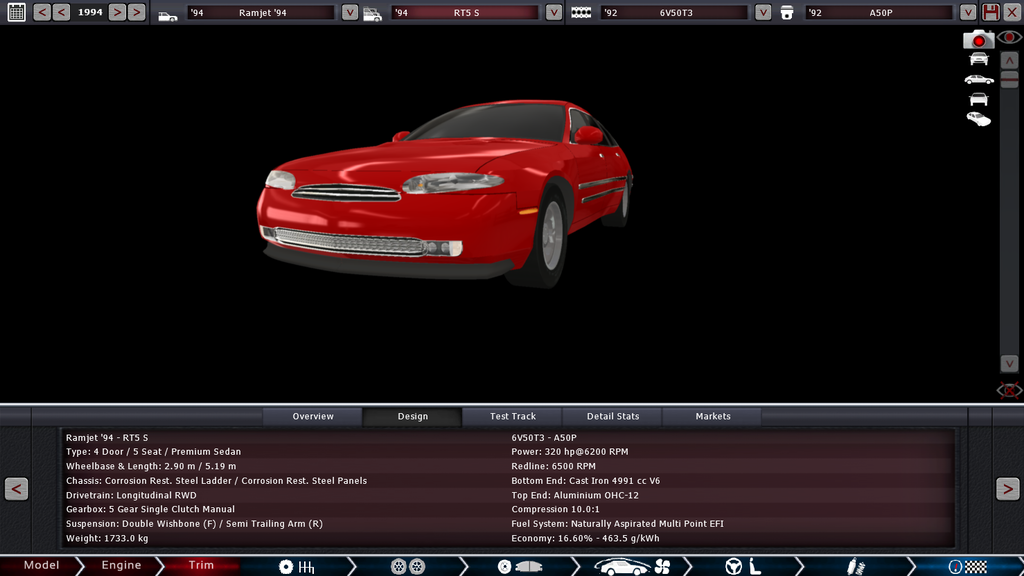
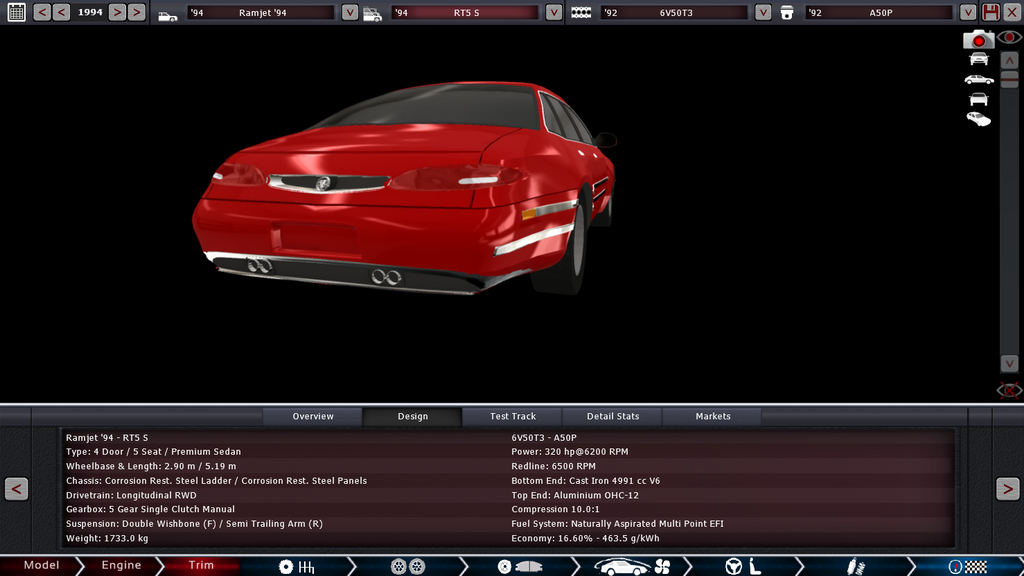
Onto the truly collectible stuff. The Ramjet RT5 S is the sportiest of all Ramjets. It's engine is the same as in the RT5, but features a higher lift camshaft and a more aggressive intake and exhaust, as well as an additional oil cooler and larger radiator. It may only have 20hp more than the RT5, but its strength lies in the corners. The entire chassis has been further beefed up with upgraded springs, dampers, vented four piston brakes at the front with two pistons at the rear, low-profile 18" wheels with sticky high performance tyres, widened track width and aggressive camber. The result was a car that, over 20 years after its launch is still hailed as one of the best handling body on frame cars ever despite it's size and weight. The pièce de résistance however was the 5-speed manual transmission only available for the first three model years due to poor sales making it one of the most sought after (and expensive) models. Later models had the 4-speed automatic from the turbo.
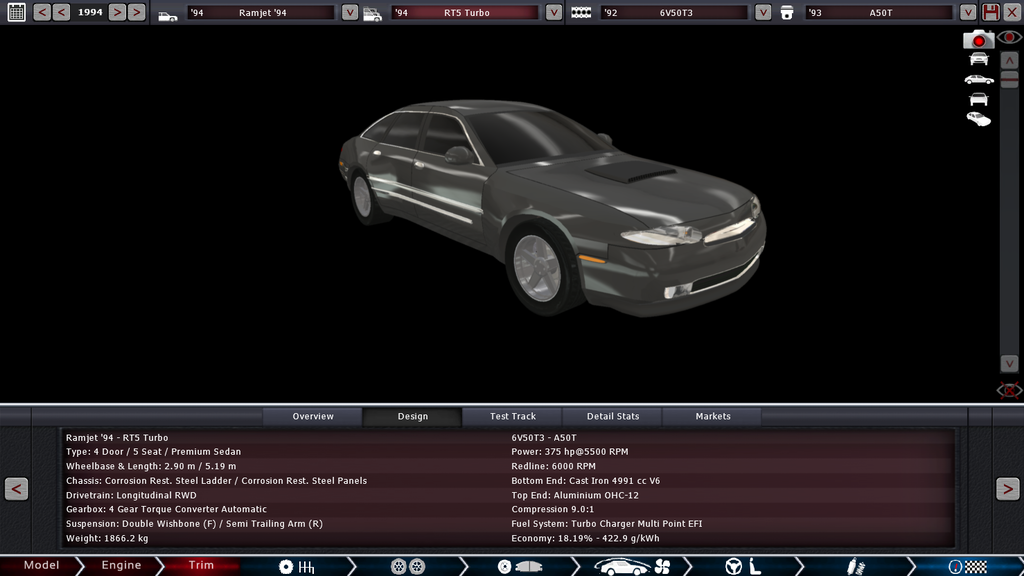
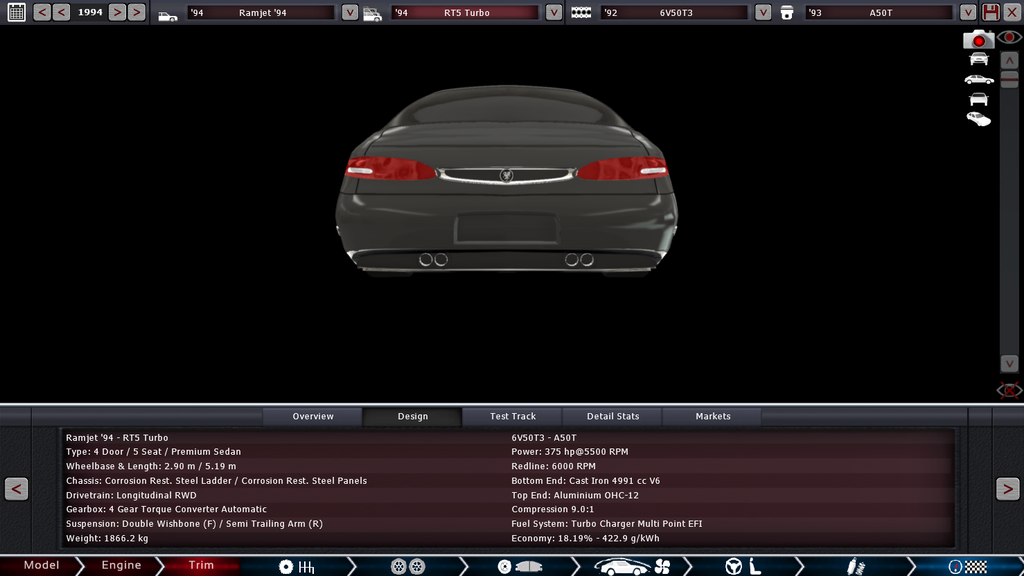
The RT5 Turbo is the high-end model of the Ramjet family. It has a 5.0L twin turbo V6 that produces 375hp and nearly 480lb-ft of torque. The Turbo however did not have a manual transmission option like the RT5 S it is based on, and it also lacks the suspension upgrades from said model but because of the immense power it can reach over 180mph, making it more of a straight line sports car killer. The distinctive feature of the RT5 Turbo is its fancy hood scoop. But there was still one car that even the Turbo couldn't catch...
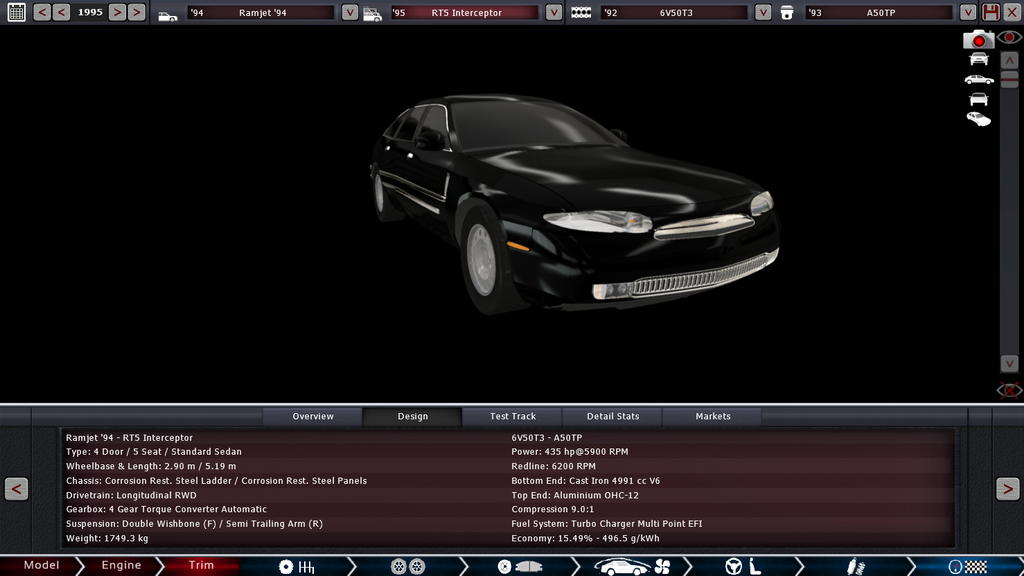
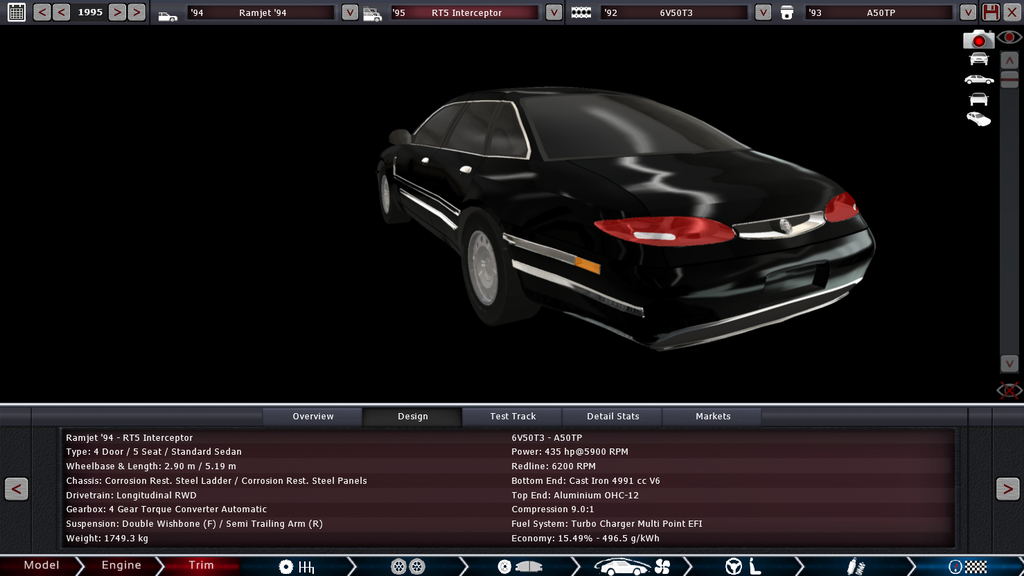
This is the RT5 Interceptor. It combined all the best bits of the Ramjet RT5 models, mainly the narrow-body of the RT5 with the engine and transmission of the RT5 Turbo and the cylinder head and oil cooler of the RT5 S.
It also received cop shocks, cop suspension, cop brakes, cop wheels and reinforced concealed push bars. It had 435hp, did 0-62mph in 5sec and had a top speed of 190mph. Unfortunately it was in fact not sold to the general public as this model was for highway patrol units only. If the Police were driving in one of these, your chances of escaping them were minimal. The chances of spotting them were even lower, because the only visual difference between an unmarked RT5 Interceptor and your granny's beige ST4 was a small cooling duct on the side:
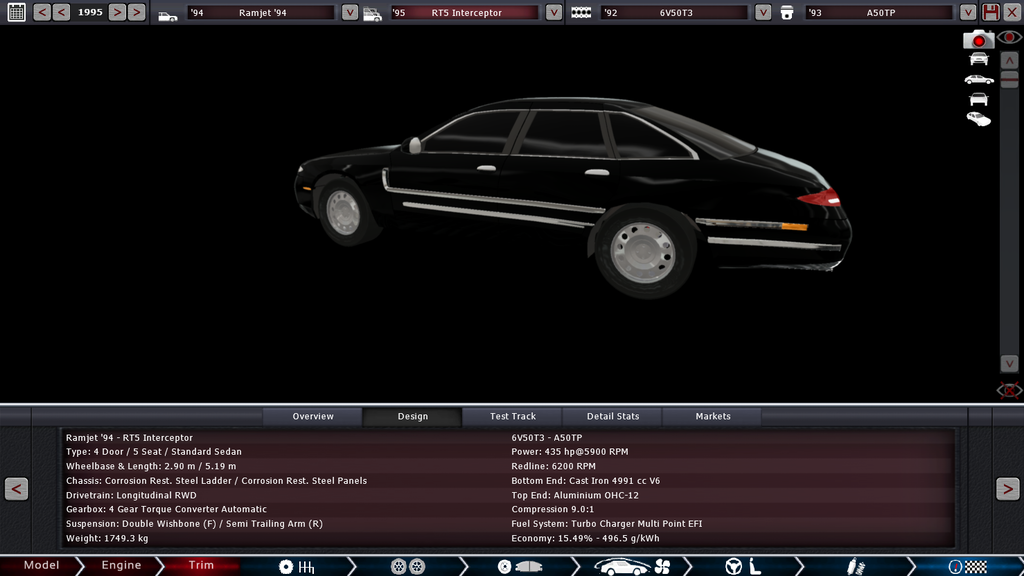
Thankfully, due to the high price and maintenance costs only about 1,500 of them were built in 1995 and 1996, making them incredibly rare and expensive on the used market (three years ago, a well seasoned, but also well maintained example sold for $113,500 at a police auction).
Overall, this generation of Ramjet was very successful, selling over 730,000 units between 1994 and 2001, most of which being CTs and STs. CT and ST models were known as indestructible if uninspiring cars much like their main competitors. Since 2008 a story about an elusive immortal Ramjet circulated on the internet, in which a very early ST4 drove over 600.000miles in america with only half of them including regular maintenance, crashed multiple times and later exported to Bolivia where it supposedly still rolls around flattening potholes with its original engine and chassis.
The much rarer RT models on the other hand earned a cult following in the tuner scene because of the overbuilt engines capable of withstanding immense power.

